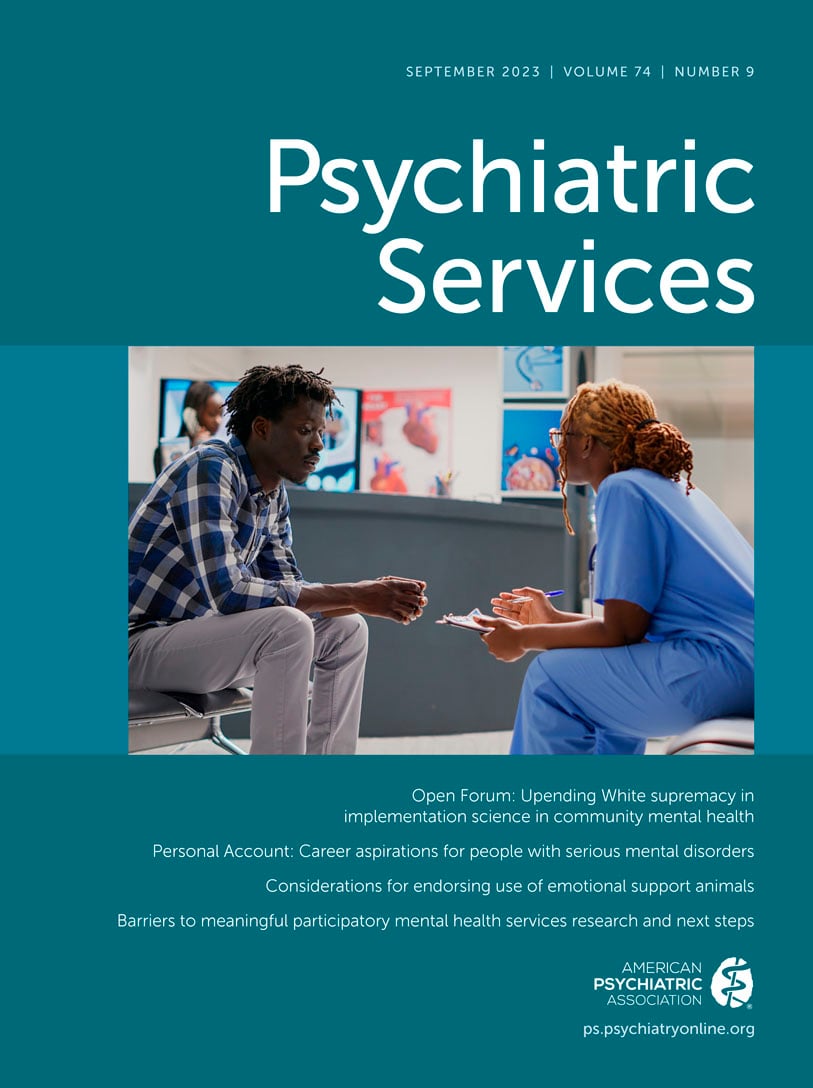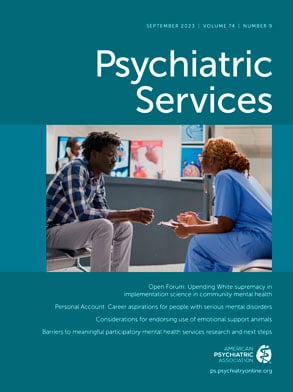Policy makers are looking for evidence to inform implementation decisions related to the 988 Suicide and Crisis Lifeline (hereafter referred to as “the 988 Lifeline”). Kandula et al.'s recent study (
1) makes a meaningful contribution to a limited evidence base on how 988 Lifeline call volume rates and their correlates vary within and between states. The study also raises issues related to challenges of interpreting between-state variation in 988 Lifeline call volume rates.
One challenge is state-level misclassification of 988 Lifeline calls. As Kandula et al. note, state-level classification of 988 Lifeline calls is based on the area code of the caller. Use of area codes results in some misclassification bias because many 988 Lifeline callers primarily use a cell phone with an area code that does not correspond with their state of primary residence. A Federal Communications Commission report states that over 80% of 988 Lifeline calls are from cell phones; Pew Research data indicate wide between-state variation in the proportion of the population whose cell phone area code does not correspond with their state. For example, Pew estimates of state “undercoverage” (the percentage of people living in a given state who have an out-of-state cell phone area code) range from 21% in Maryland to 5% in Michigan. Such metrics could be integrated into analyses to improve the accuracy of between-state comparisons of 988 Lifeline call volume rates.
A second challenge relates to crisis lines tailored for specific populations and variation in the size of these populations between states. As Kandula et al. describe, 988 Lifeline callers who self-identify as veterans are routed to the Veterans Crisis Line (by pressing 1), and such calls were therefore not included in their analyses. This decision is justifiable, yet the accuracy of state-level 988 Lifeline call volume rates could arguably be enhanced by adjusting state population size estimates—the denominators used to calculate the rates—to account for the number of veterans in the state (who were not counted in the numerator because of exclusion of calls routed to the Veterans Crisis Line). This adjustment could improve the accuracy of between-state comparisons of 988 Lifeline call volume rates because the proportion of residents who are veterans varies among states (e.g., 4% in New Jersey vs. 9% in Virginia).
A similar approach could be taken for 988 Lifeline callers who opt to speak with a counselor in Spanish by pressing 2 or with an LGBT+ populations counselor by pressing 3. As with veterans, the proportion of the population that primarily speaks Spanish at home varies by state (e.g., >25% in California and Texas vs. <5% in most other states). There is also wide between-state variation in the proportion of state populations that identifies as LGBT+. In future research, such estimates could be used to enhance the precision of state-level 988 Lifeline call volume rates if calls routed to these population-specific lines are not counted in the call volume numerator.
A third challenge, also noted by Kandula et al., relates to between-state variation in the presence of crisis call centers that are not affiliated with the 988 Lifeline. Calls to these centers are not captured in 988 Lifeline call volume rates. A 2022 NRI survey of state mental health agency officials identified 344 non–988 Lifeline-affiliated call centers across the United States and about 200 centers affiliated with the 988 Lifeline. Twenty-nine states operated both 988 Lifeline–affiliated and non–988 Lifeline-affiliated call centers with between-state variation in the number of non–988 Lifeline-affiliated centers (e.g., ranging from zero in many states to 85 in Ohio). Methods that account for calls routed to non–988 Lifeline-affiliated call centers could be important to facilitating between-state comparisons of crisis call rates.
State policy makers are often eager to learn how their state’s metrics compare with others’. Such comparisons are valid, however, only when the metrics of interest are comparable (i.e., “apples to apples”) between states. Because of the challenges described above, comparing state-level 988 Lifeline call volume rates can sometimes entail an “apples to oranges,” or even “bananas,” situation. Fortunately, data exist and methods can be used to help facilitate between-state comparisons of 988 Lifeline call volumes to build on the important work of Kandula et al.

